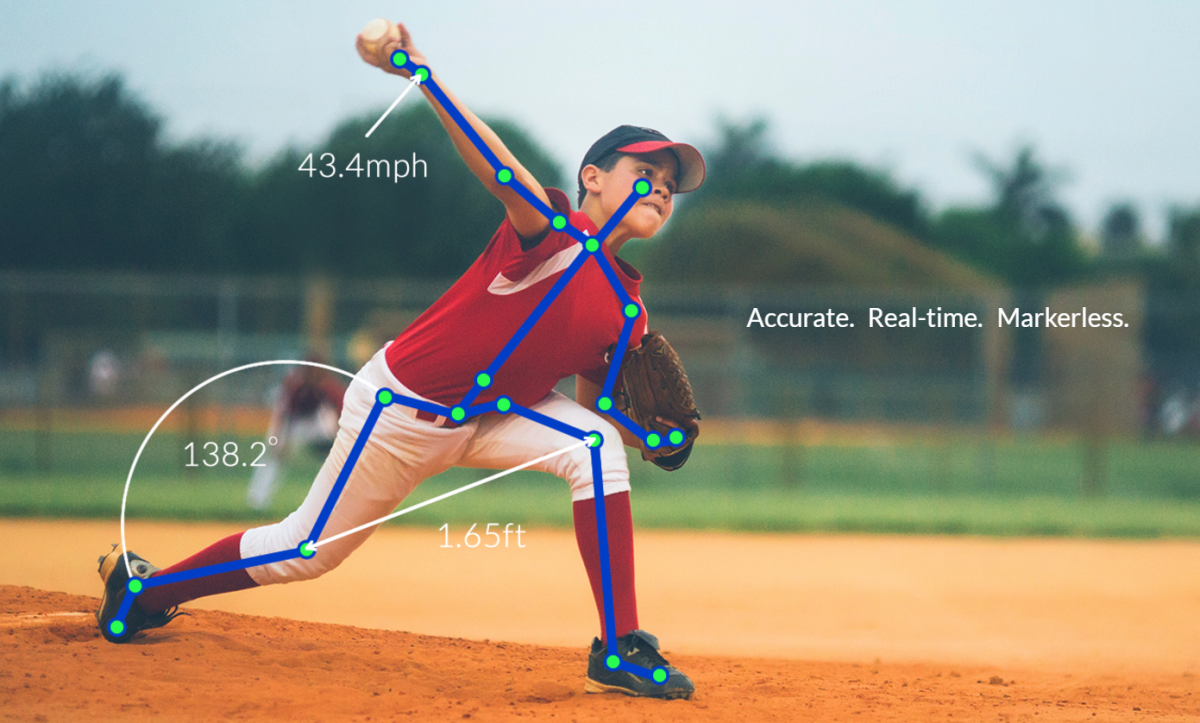A vision analysis system from Kinatrax has helped keep baseball pitchers from the Chicago Cubs' team that won the 2016 World Series injury-free. Greg Blackman reports from a talk Steven Cadavid at Kinatrax gave at the Embedded Vision Summit in Santa Clara

Kinatrax consists of multiple cameras mounted throughout the stadium pointing at the pitcher’s mound. (Credit: Kinatrax)
When the Chicago Cubs won the baseball World Series last year the team ended a 108-year wait to reclaim the title they last won in 1908, the longest title drought in the game. The story was one of the great sporting moments, certainly of 2016, if not the decade.
Computer vision expert Kinatrax supplied an imaging system that analysed the Cubs’ pitchers during that World Series winning season. The vision system has cameras pointing at the pitcher’s mound to give biomechanical data about the pitcher that allows the coaches to make decisions regarding how to prevent their pitchers getting injured.
Kinatrax installed its first system for the Tampa Bay Rays in 2015, and has since provided vision analytics for three major league ball parks, including the Cubs, and soon to be four minor league sites.
The baseball pitcher’s arm is one of the most valuable commodities in sport. ‘There is a lot of value in that arm, and relatively little has been done, in terms of technology, to try and prevent injury and maximise the potential of the players,’ commented Dr Steven Cadavid, president of Kinatrax, speaking at the Embedded Vision Summit in Santa Clara, California on 2 May. ‘We’re trying to put a quantitative spin on video analysis.’
Cadavid gave a figure during his presentation that, every year, Major League Baseball (MLB) spends more than $1.5 billion on its pitchers. That’s five times the combined salaries of all the starting quarterbacks in the National Football League (NFL), he added for comparison.
Kinatrax consists of multiple cameras mounted throughout the stadium pointing at the pitcher’s mound. These capture high-speed synchronous video of the pitcher, from which the system obtains a 3D reconstruction of the pitch arm frame-by-frame and extracts the kinematic data.
The system is able to do micro-level analysis of the biomechanics of the pitcher. ‘We’re tracking more than 20 joints in the body on a frame-by-frame basis at over 300fps,’ Cadavid explained. Over the course of the 2016 season, Kinatrax analysed more than six million frames for pose estimation.
A common injury for baseball pitchers is tearing their ulnar collateral ligament, which connects the upper arm to the lower arm. Traditionally, pitchers recovering from injury are analysed in a laboratory with marker-based motion capture to obtain data on the biomechanics of the throw. Even though marker-based motion capture is the gold standard for sports analysis Cadavid said, there are advantages to a markerless system, the main one being analysis can be carried out during a game.
‘The pinnacle of motion capture analysis would be to be able to collect biomechanical data within the game,’ he added. ‘In 2013 Kinatrax set out to do this.’
The company provides the motion capture results 12 to 24 hours after the game in order to achieve the level of accuracy required by the teams. Cadavid said that 95 per cent of the system’s frames are within a five degree angular error. This has been tested across elbow flexion and shoulder internal and external rotation, which are important measures for understanding the mechanics of the pitch.
The system can also compare pre-injury mechanics with post-injury data to give an idea of when a pitcher can come back into the line up. Kinatrax selects a series of key poses in the pitch delivery, including the windup, maximum external shoulder rotation, ball release, maximum internal shoulder rotation, and follow through, and subject-specific models are built for these actions. In 2016, the company built models for 300 pitchers spanning the majority of Major League Baseball.
‘We’re expanding that out to minor league, where it’s even more important because the mechanics there need more refinement, and there’s potentially more value added at the lower levels,’ Cadavid remarked. The company is also looking to expand to track the hitter, which is equally as interesting for many teams.
‘We did not help the Chicago Cubs win the World Series, but we did provide data that provided them with some insights that were valuable to them,’ Cadavid concluded. ‘That was a nice success story last year.’

